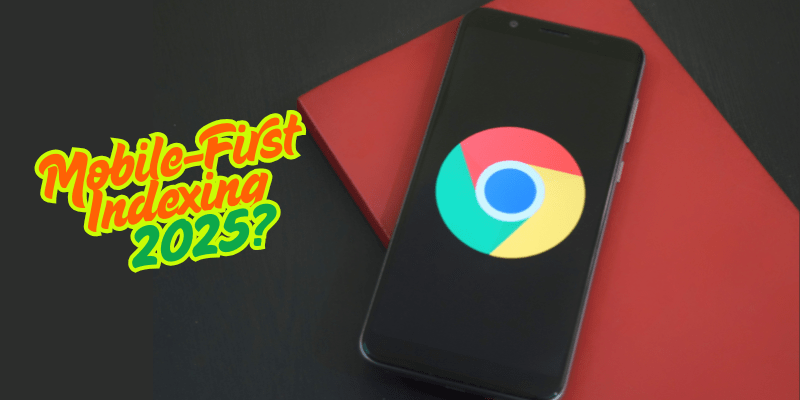What Is Mobile-First Indexing? Why It Matters in 2025?
Published: 16/May/2025
Have you ever wondered how Google decides what to show you first in search results? In 2025, the answer is clearer than ever: mobile-first indexing. If your website isn’t ready for mobile users, it could be missing out.

This blog will help you understand what mobile-first indexing is, why it’s important, and how to optimize for it.
What Is Mobile-First Indexing?
Mobile-first indexing means Google mainly uses the mobile version of your website to decide where your site shows up in search results. It doesn’t ignore your desktop site. But if the mobile site is different or worse. It could hurt your rankings.
What Does Mobile-First Indexing Mean?
It means Google looks at the mobile version of your content first, even if someone searches from a desktop. It’s a shift from the past when Google used to look at desktop versions first.
A Quick Look at the History of Indexing
Before mobile-first indexing, Google’s bots crawled and indexed desktop versions of websites. This made sense when most users browsed the web on computers.
But things changed fast:
- Mobile traffic grew.
- User behavior shifted.
- Google adapted.
In 2016, Google announced mobile-first indexing. Since 2020, most sites have been indexed this way by default.
Why It Matters in 2025
In 2025, most users will visit websites on smartphones. If your site doesn’t perform well on mobile, it affects your search ranking. Here’s why mobile-first indexing matters:
1. Mobile Is the Main Device
More than 60% of web traffic comes from mobile devices. If your site is hard to use on a phone, users will leave quickly. Google notices that.
2. Google Uses Mobile-First Indexing
Google uses mobile-first indexing for all websites. If your site is only built for desktop, you risk falling behind in search results.
3. It Affects SEO Performance
Mobile-first indexing in SEO is huge. If your mobile content is missing keywords, links, or text that’s on desktop, you lose visibility.
Real-Life Mobile-First Examples
Let’s say you run an online store:
- Your desktop site has 100 products.
- Your mobile site only shows 50.
Google will only see the 50 products.
Another example:
- Your blog post on desktop is 1500 words.
- On mobile, it’s trimmed to 300 words.
Google indexes the 300-word version.
See the issue? Make sure both versions match.
How to Test Mobile-First Indexing
Want to check if Google uses mobile-first indexing for your site? Use these tools:
1. Google Search Console
Visit Google Search Central Mobile First Indexing.
- Check “Crawl Stats.”
- Look for “Googlebot Smartphone.”
If you see it, you’re on mobile-first indexing.
2. Mobile-Friendly Test Tool
Use Google’s Mobile-Friendly Test to see how your page looks on phones.
3. Site Audit Tools
Use tools like SEMrush or Ahrefs. These show how your mobile version performs.
Mobile-First Indexing Best Practices

Follow these tips to get your site ready:
1. Same Content on Desktop and Mobile
Make sure both versions show the same text, images, videos, and links.
2. Use Responsive Design
Responsive websites adjust automatically to screen size. This is Google’s recommended design.
3. Improve Page Speed
Use tools like PageSpeed Insights. Compress images, avoid heavy scripts, and use browser caching.
4. Mobile-Friendly Layout
- Use big fonts.
- Avoid pop-ups.
- Make buttons easy to tap.
5. Structured Data
Add schema markup on both versions. Keep it the same so Google understands your content.
6. Meta Tags and Titles
Use the same meta titles and descriptions for both versions.
How Mobile-First Indexing Impacts SEO
If you ignore mobile, your SEO takes a hit. Let’s break it down:
- Missing content? You lose rankings.
- Slow mobile speed? Users leave fast.
- Poor design? Bounce rate increases.
Mobile-first indexing SEO means:
- Clean code
- Fast loading
- Easy navigation
That’s what Google loves.
What About Desktop-Only Websites?
If your website has no mobile version, Google will still index the desktop version. But you may rank lower than mobile-optimized competitors.
So, even if your audience is mostly desktop, build a mobile version.
You might like these posts!
- Top 5 free tools for analyzing competitor backlinks
- 5 tools to find easy-to-rank keywords for niche websites
7 Detailed FAQs
1. What is meant by mobile-first indexing?
This means Google uses the mobile version of your website to decide how your content ranks in search results. The mobile version becomes the main version that Google examines.
2. Why is my phone indexing?
If you’re seeing “indexing” on your phone or getting alerts, it likely refers to how search engines crawl your content. It doesn’t mean your phone is doing the indexing. Instead, Google is indexing your mobile site.
3. How can I test for mobile-first indexing?
Use Google Search Console to check the crawl agent. If you see “Googlebot Smartphone,” your site is on mobile-first indexing. You can also run a Mobile-Friendly Test for more insights.
4. What is the difference between mobile-first and mobile-friendly?
- Mobile-first: Google uses your mobile site for indexing.
- Mobile-friendly: Your site works well on mobile devices.
You need both to succeed in SEO.
5. Can mobile-first indexing hurt my rankings?
Yes, if your mobile site:
- Has less content
- Loads slowly
- Has bad UX (user experience)
Google will rank you lower than optimized sites.
6. How do I optimize for mobile-first indexing?
Follow these steps:
- Use responsive design.
- Match content across mobile and desktop.
- Improve loading speed.
- Make your site easy to use on small screens.
7. Why is mobile-first indexing important for SEO in 2025?
In 2025, mobile usage is still growing. Most people browse, shop, and search from their phones. That means Google focuses on mobile performance. If your mobile site is weak, your SEO suffers.
Mobile-first indexing in SEO is no longer optional. It’s the standard.
To stay visible:
- Make your mobile site strong.
- Ensure your content is complete.
- Optimize speed and design.
Your site will perform better and rank higher.
Final Thoughts
Mobile-first indexing is here to stay. In 2025, it will be more important than ever. Your users are on phones, and Google is watching.
Want to win in SEO? Focus on mobile.
Here’s a quick checklist:
✅ Use responsive design
✅ Show the same content on all devices
✅ Speed up your mobile site
✅ Test regularly with Google tools
Mobile-first isn’t just a Google rule. It’s a user-first strategy.
These posts could interest you!
- The Ultimate SEO Checklist for New Bloggers
- The Rise of Voice Search: What It Means for Digital Marketing





